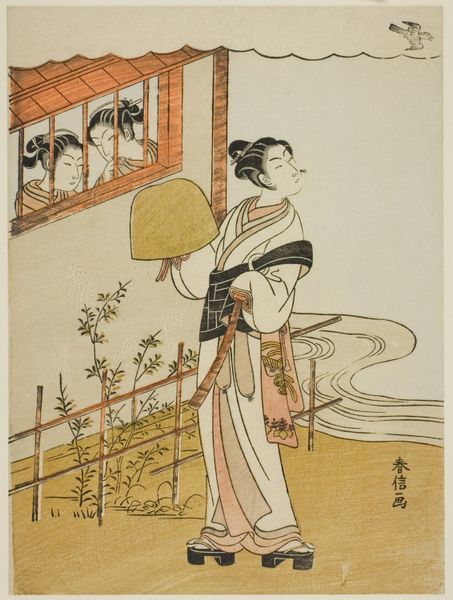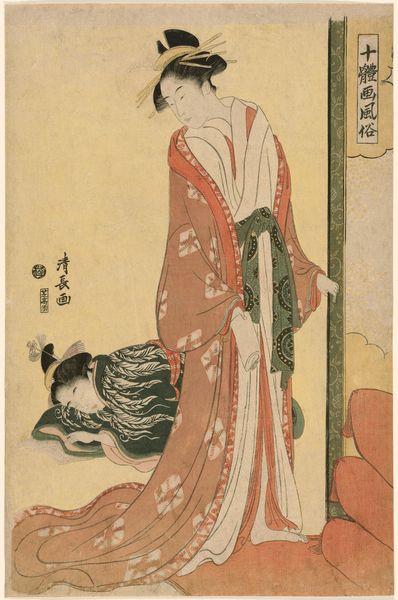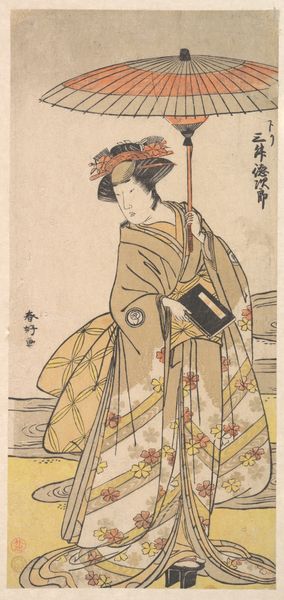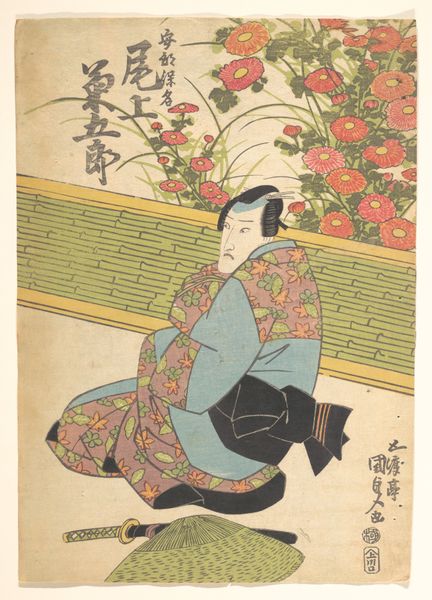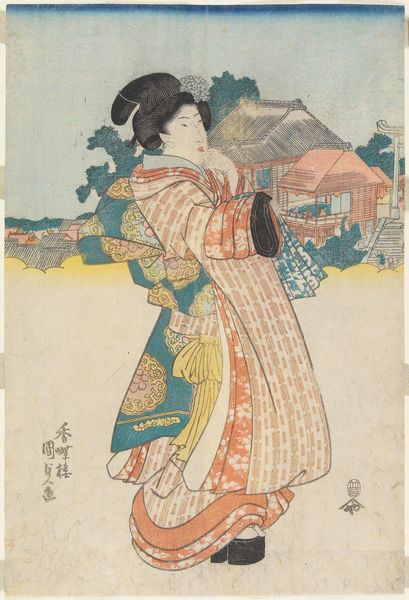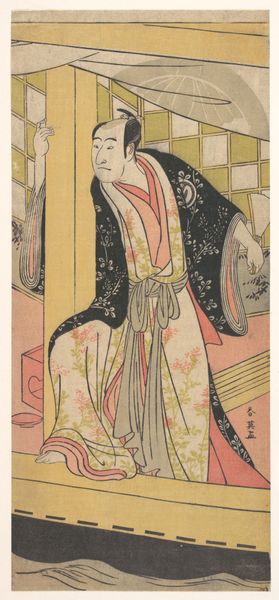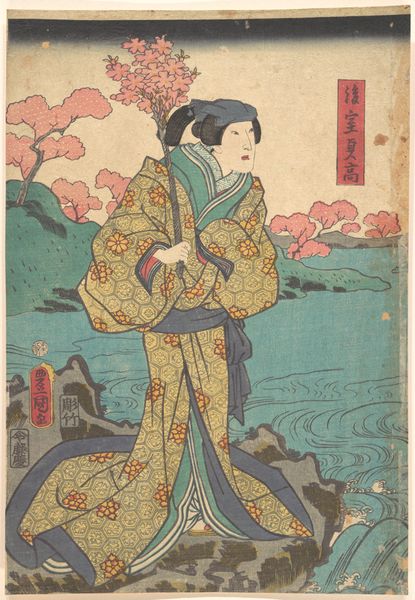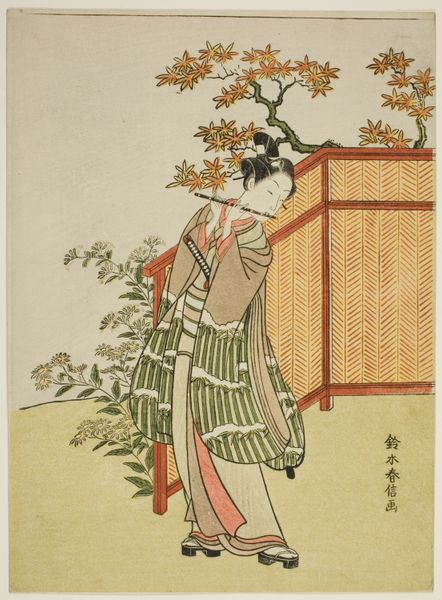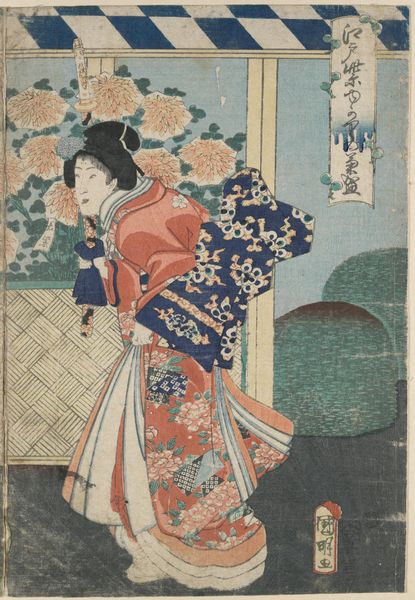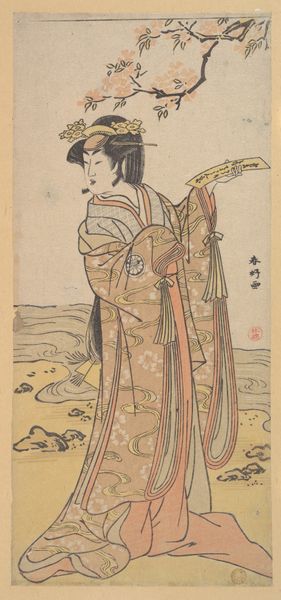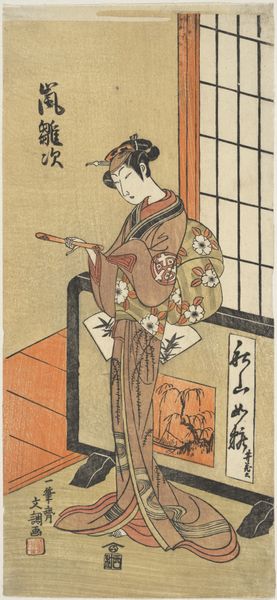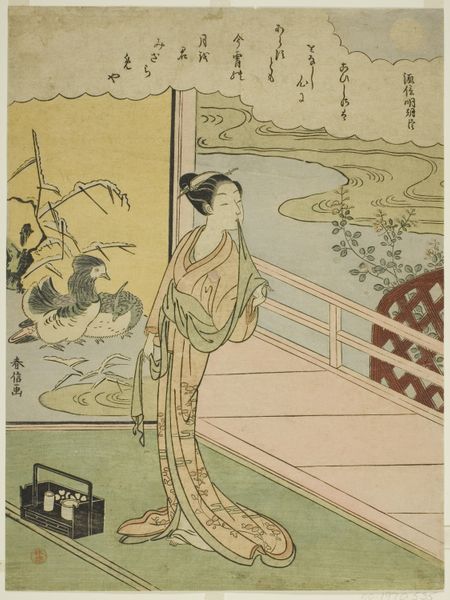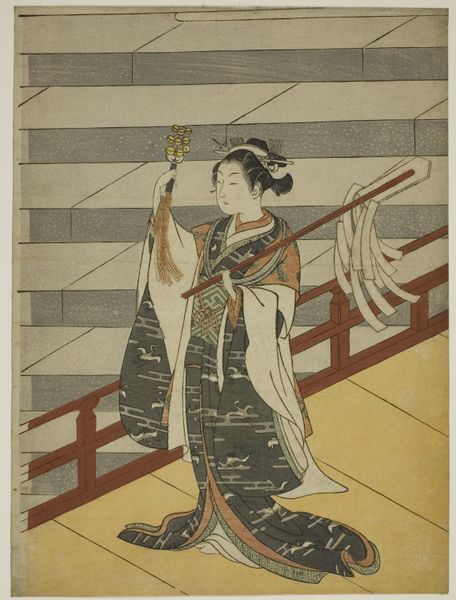
A Flute-Playing Monk (Komusō); The Fourth Month (Uzuki), from the series Fashionable Poetic Immortals of the Four Seasons (Fūzoku shiki kasen) 1758 - 1778
0:00
0:00
print, woodblock-print
# print
#
asian-art
#
landscape
#
caricature
#
ukiyo-e
#
figuration
#
woodblock-print
Dimensions: H. 11 in. (27.9 cm); W. 8 3/16 in. (20.8 cm)
Copyright: Public Domain
Curator: Suzuki Harunobu's woodblock print, titled "A Flute-Playing Monk (Komuso); The Fourth Month (Uzuki), from the series Fashionable Poetic Immortals of the Four Seasons (Fuzoku shiki kasen)", dating from between 1758 and 1778, presents an intriguing scene. Editor: It's certainly evocative. My immediate impression is one of restrained beauty. The pale colors and delicate lines create a sense of calm contemplation, even a slight melancholy. Curator: Consider the context: the ukiyo-e tradition in which Harunobu worked. These prints were popular, meant for mass consumption. Harunobu revolutionized the process, making full-color prints, nishiki-e, affordable for a broader public. We're not just looking at a pretty picture but a consumer object reflecting the values and tastes of Edo period society. Editor: Absolutely, and his masterful manipulation of color gradation, especially visible in the robes and background washes, elevates it beyond a mere consumer product. The asymmetry of the composition, how the figure is placed to one side, creates an intriguing visual tension, drawing the eye around the entire image. Curator: Let's look at that "flute-playing monk." What do you make of it? It's clearly not a real Komuso. Notice the fashionable garments. The artist presents a parody of the monk. These monks begged to survive, so representing them as being fashionable could indicate social commentary, do you agree? Editor: Yes, the deliberate anachronism points to a knowing wink at the viewer. And it also serves the aesthetic harmony. Consider how the green hat echoes the color of the ground, or how the diagonal lines of the fence lead the eye towards the window with the women. Everything is carefully constructed to create this cohesive visual experience. Curator: And we shouldn't ignore the labour involved, the carving of the woodblocks, the application of pigments layer by layer, skills often downplayed in art historical analysis. It required collective skills which elevated this visual output to become accessible to society, Editor: An insightful perspective! Viewing it through both lenses allows us to truly appreciate the artwork's layers. From process to design to composition and the commentary behind it, Harunobu gave much food for thought, literally and visually. Curator: I agree. Seeing how context influenced the visual allows me to appreciate even further the craftsmanship of this artwork.
Comments
No comments
Be the first to comment and join the conversation on the ultimate creative platform.
